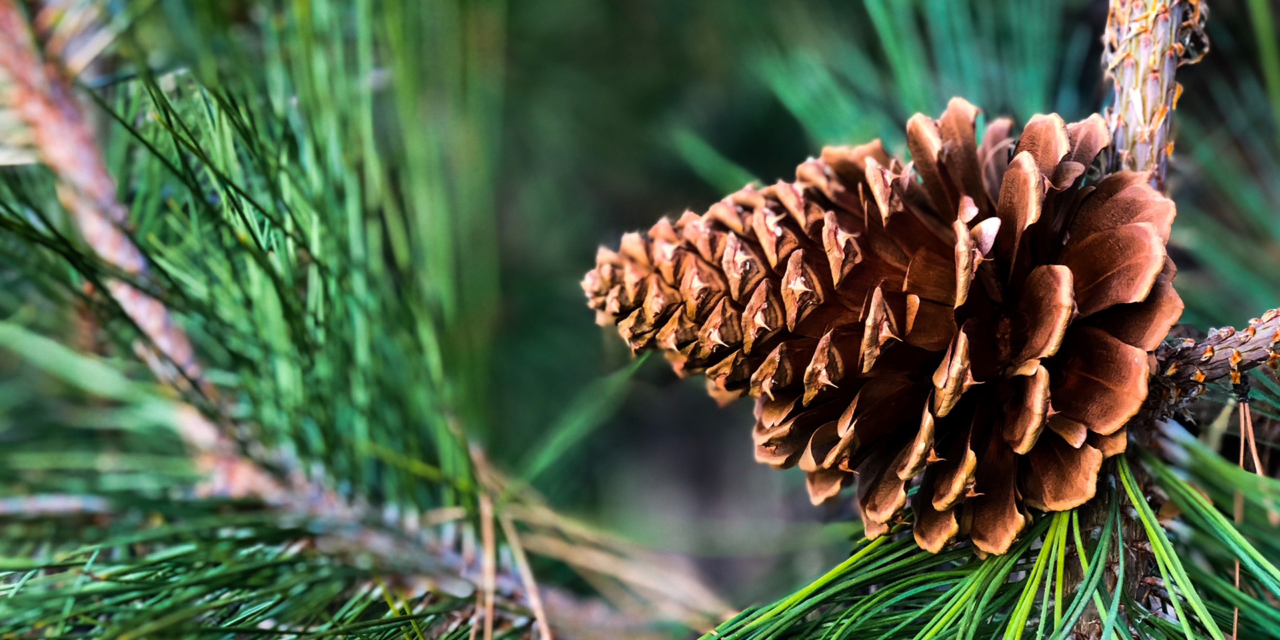“The goal of life is to make your heartbeat match the beat of the universe, to match your nature with Nature.”
~Joseph Campbell
We are approaching the threshold of Winter, and these days that come before that elemental edge are known within the Christian liturgical calendar as Advent—a sacred time of the year when rituals attune us to the growing darkness and, when hope is kindled, to the coming of light.
It is crucial to remind ourselves that before the light there must be darkness—a darkness that is the deep color of sunless earth. In this season, all life is being drawn back into the depths of soil, a descent that is both lulling and a longing.
And yet, isn’t it ironic that the farther the Western mind moves from celebrating this seasonal darkness and the upcoming solstice for its earthen guidance and wisdom, the brighter the holiday lights become; the louder the market cries for over-consumption; the more frenetic the pace and demand of over-worked holiday cheer? This way is contrary to the descent the wild world engages as they wait for the light.
Every Advent I see new methods, books, and calendars that aim to connect us to the meaning of this season. These seem to exist at the margins, hardly able to compete with the trumpeting chaos of holiday calendars and over-played carols. And while I do attempt to engage these new titles or traditions as a way to center myself and slow down the pace, I find that rarely do these intentions last, as there is little rooting into the reality of what my body longs to do—this longing to go inwards and follow the others with fur and four-feet, to find the kind and nourishing dark within my own inner soulscape.
Truly, the light that breaks with promise on the heels of the Winter Solstice only has power because of the darkness through which we have just come. But how can we truly know the Light if we’ve been kept from going into the Dark?
This Advent, I want to do something different or, more aptly, something deeper. I want to consider what Nature is doing, how the wild is behaving, how Earth is quieting and model something of a spiritual practice after it. Instead of buying another book to guide my Advent season, I want those with rhizomes and heartwood, those whose voices rise to moon-howl, those who curl confidently within their fur to counsel my quest for holy days that leave me with a renewed sense of faith, hope, and love. I want Nature to be my scout this season towards an ancient nativity, showing me how to rest like roots; when to withdraw like wolves; and when need for warmth demands a festive fire with family and friends.
These days before the brink of Winter, I will look deeper into the principles of biomimicry, an idea that by imitating models, systems, and elements of nature we might discover ways to solve complex human problems. Frankly, there is no way anyone can engage the news and social media without seeing the human and ecological grief and suffering happening all over this world. And I believe that Albert Einstein was absolutely correct when he said, “We can’t solve problems by using the same thinking we used to create them.”
Our anthropocentric attempts to solve our human-engineered problems need to be reoriented—rewilded to the rest of the whole from which biotic life is bound. If the Winter Dark is the time when the natural world renews itself for the regenerative life-burst of Spring, how do we expect to do the same if our Winter is guided by the same frenetic force that pressures the Western world to be lit year round?
We know we are intimately connected to earth-systems. Our bodies get sick when our planet is sick. Our ability to flourish is fastened to the potential for all life to thrive. We have awoken to this reality in the eleventh hour of climate chaos. Janine M. Benyus, author of the profound and popular book, Biomimicry: Innovation Inspired by Nature (1997) says this, “We are awake now, and the question is how do we stay awake to the living world?” I suggest that it will take practice—disciplined regular and repeated rhythms or patterns of behavior that bring about this awoken state of perception.
Following are the nine basic principles of biomimicry from Janine M. Benyus’ work:
- Nature runs on sunlight
- Nature uses only the energy it needs
- Nature fits form to function
- Nature recycles everything
- Nature rewards cooperation
- Nature banks on diversity
- Nature demands local expertise
- Nature curbs excesses from within
- Nature taps the power of limits
How different are these from the common consumptive energy of this season? And how different would the holidays be if we engaged them through a spiritual practice of biomimicry? My sense is that we would be awakened to the sacred-and-wild world in ways that would transform our experience these threshold days. Perhaps we would come to find that we have enough. That we are enough.
Practice
Instead of spiritual practices that lead us away from the dark, consider practicing rituals that place us here—that designate the dark earth as holy ground and sacred soil. Over the course of Advent, consider engaging each of the nine principles above as elements of your spiritual practices.
- Take 2-3 days to reflect and respond to each principle and imagine ways in which you can bring that principle into practice. Begin by simply reframing each principle with the personal pronoun, “I.” For example, “I run on sunlight.” “I use only the energy I need,” etc.
- How does this statement feel to you? Is it true? Does it invite a response of longing or desire for a different way of being? How does it challenge you in this season? It’s very interesting to think of these principles through the lens of holiday gift-giving and even holiday activities and festivities; these foundational aspects of the natural world don’t work within a world of capitalist consumerism, over-consumption, and narrow religious views.
- Let’s take this reframing into our inner-world, our soulscape. Are you able to restate the basic principles of biomimicry as a spiritual or soulful practice? Does your spiritual tradition or practice reward cooperation? Does it demand local expertise? If yes, how? If not, how are you being invited to a biomimetic lens of your faith?
- What rituals can be created to honor the sacred rhythms within the principles of biomimicry? Perhaps you bring a cup full of dark humus earth into your home and create an Advent altar with it, pairing it with a candle. Do you already have an Advent wreath for your family table? Place the cup of earth at the center! This creates an earthen awareness for darkness and connects to the question: “What do I need to stay grounded through this season?” In our family, we gradually begin turning off electric lamps or lights in our house and replace them with candlelight so that our eyes can re-sensitize to the dark; by the time we are at the Winter Solstice we have only candlelight within our home and boy, can you feel the dark! This is a dark that is hard to come by in the city as light shines year round from homes, street lights, cars, businesses, etc. I also like this transition to candlelight as I find that we move slower in the house when only candles are lit. This honors what our bodies want to do naturally in this season, instead of pushing them to rush towards the coming light.
“Seeds grow in the dark—so do we.
Let’s stop making such a virtue out of the light.
Let’s turn toward what’s in the shadows and breathe it in,
breathe it here, meeting it face-to-face until we realize
with more than mind that what we are seeing
is none other than us in endarkened disguise.
Seeds grow in the dark—so do we.
Let’s not be blinded by light
Let’s unwrap the night
Building a faith too deep to be spoken
A recognition too central to be broken
Until even the darkest of days can light our way.”
~Robert Augustus Masters

